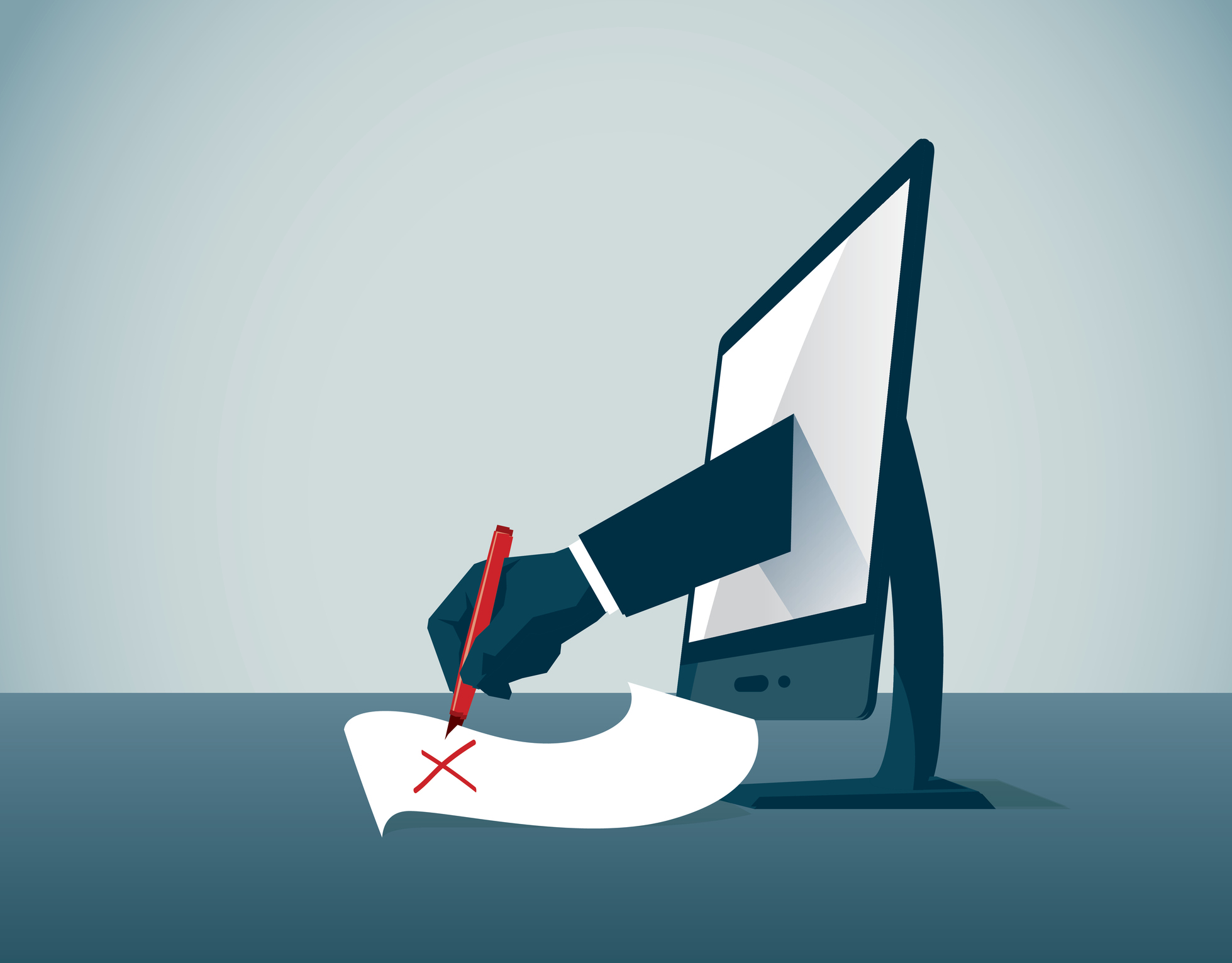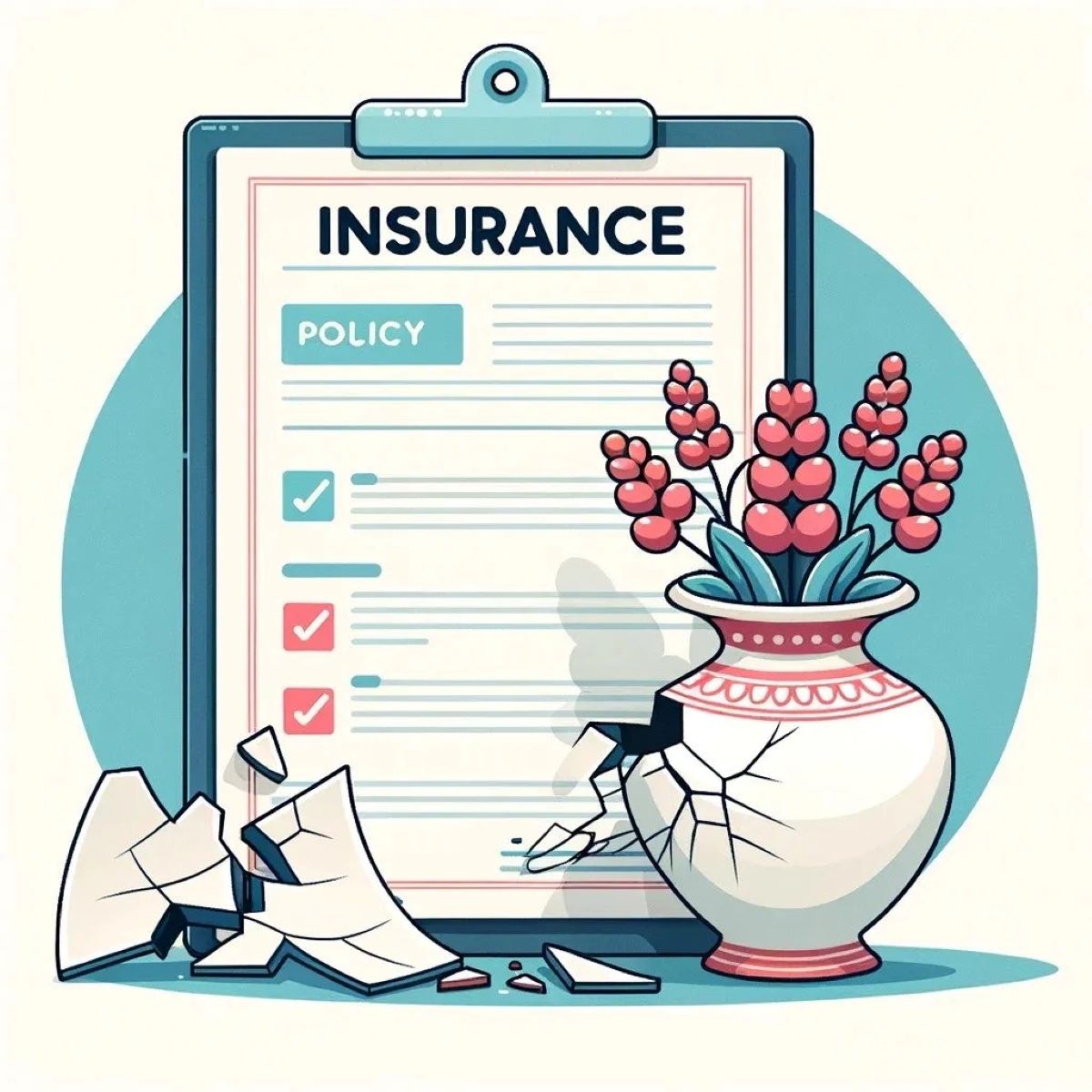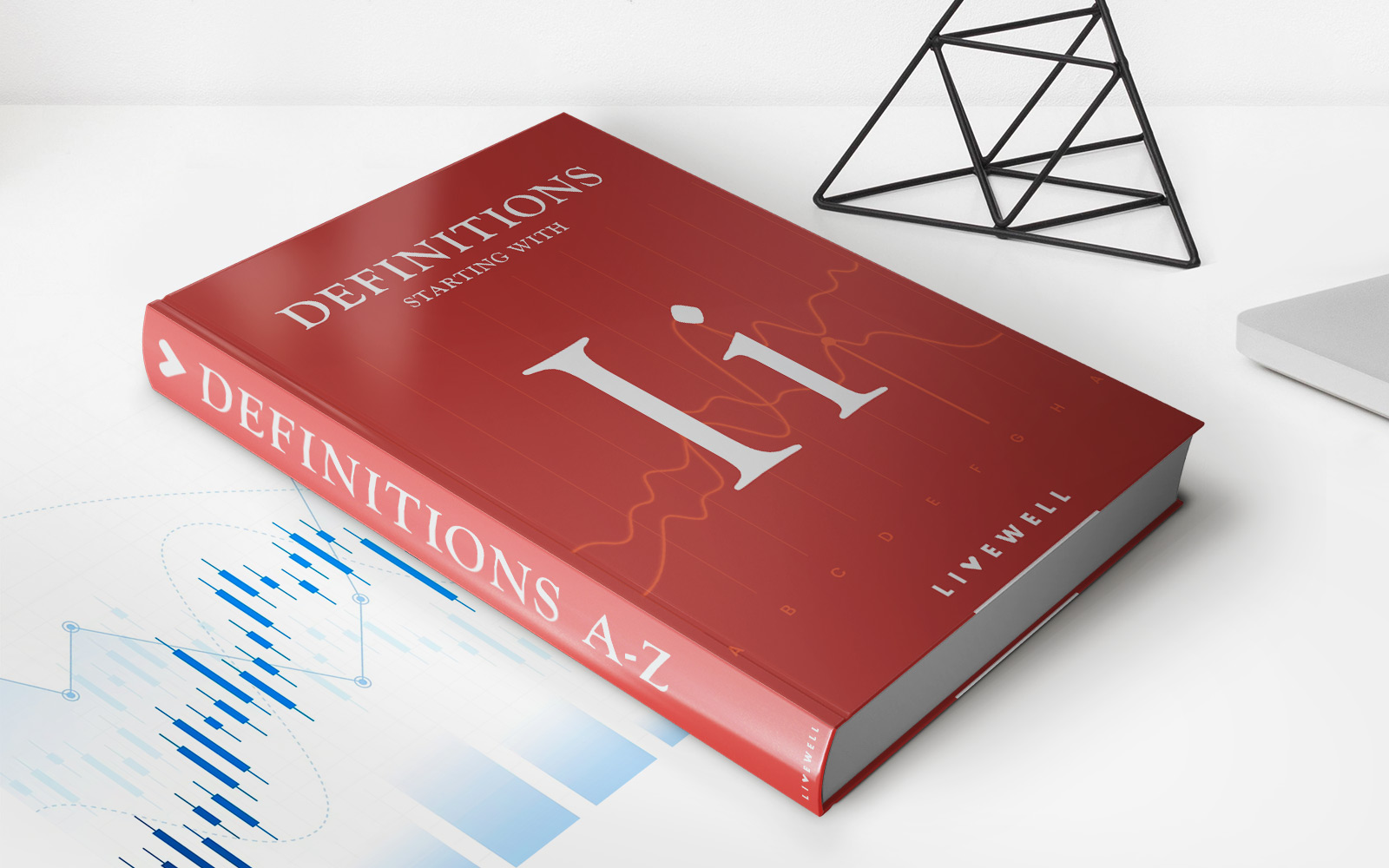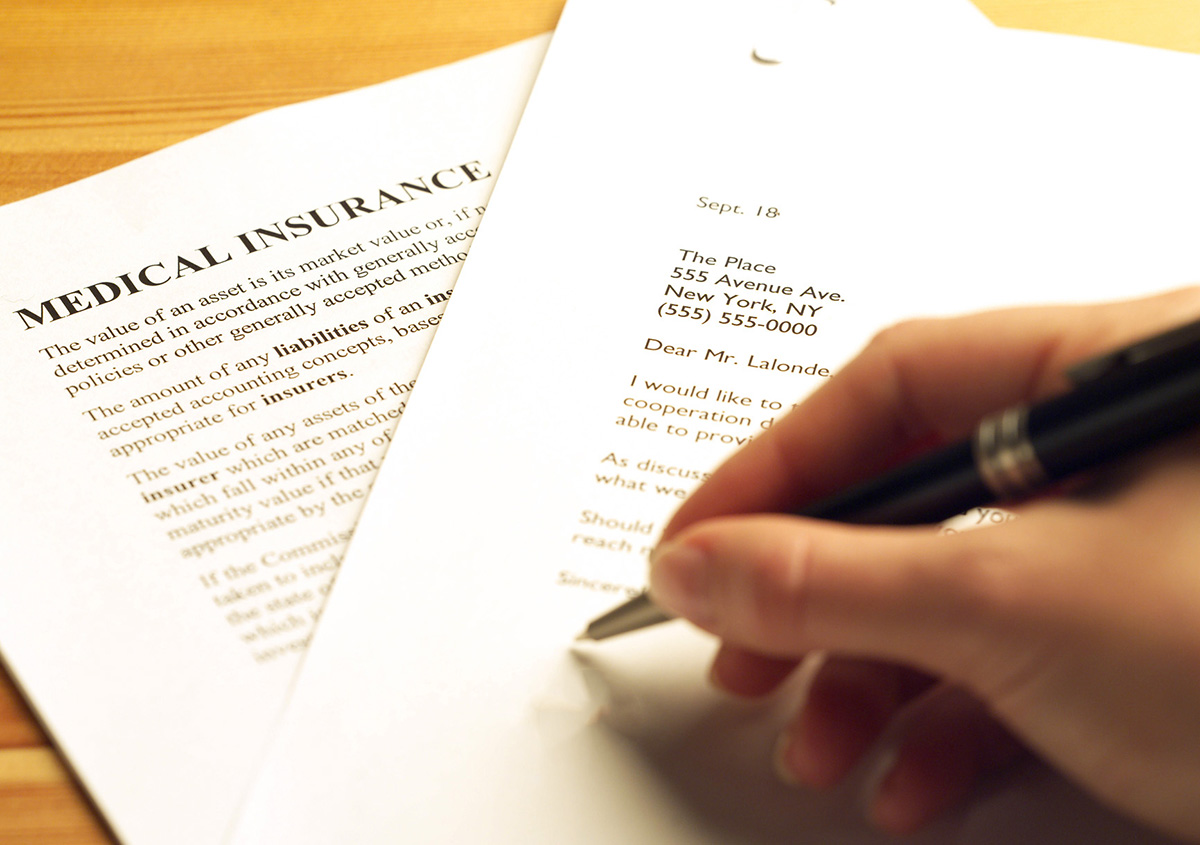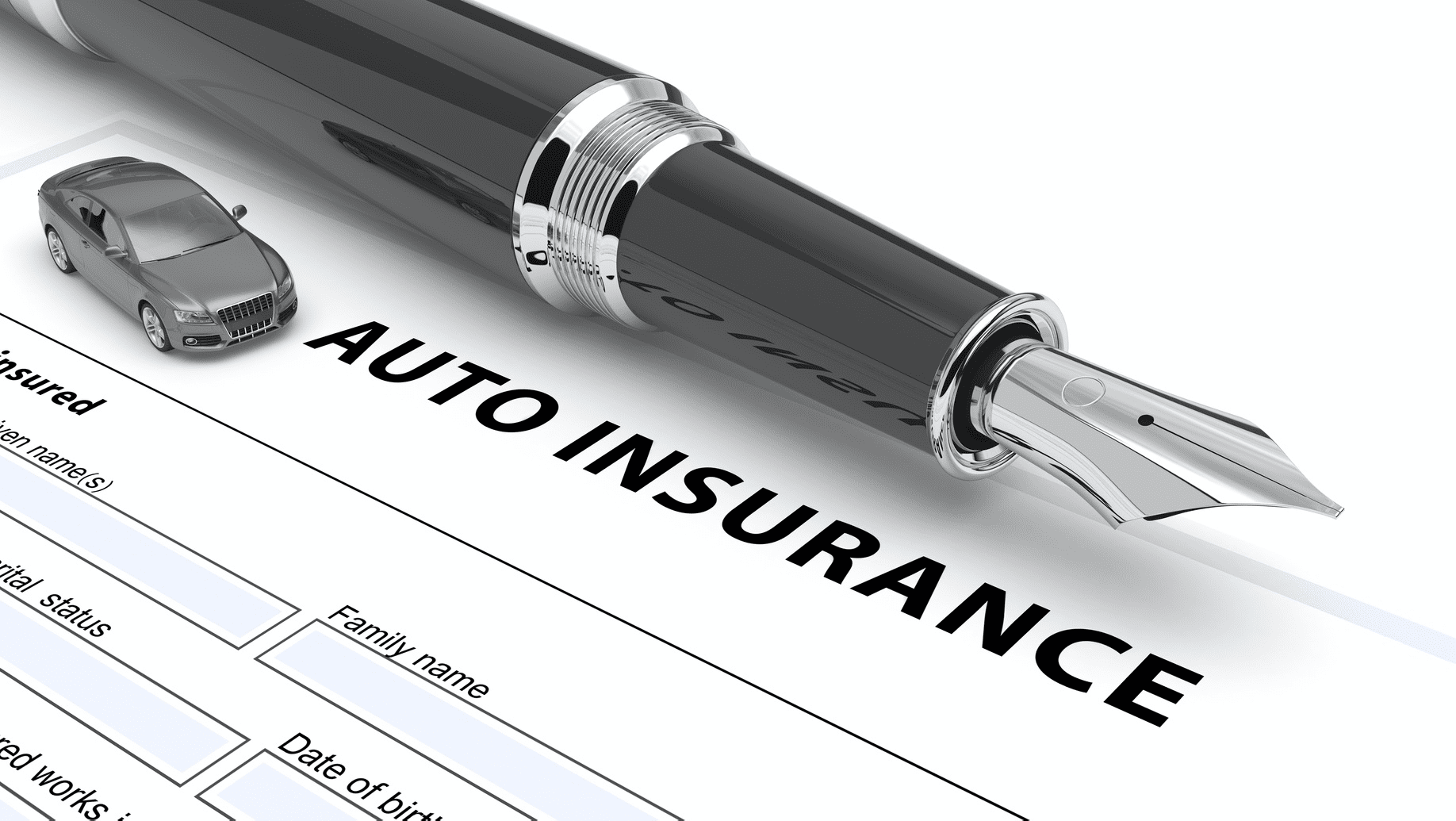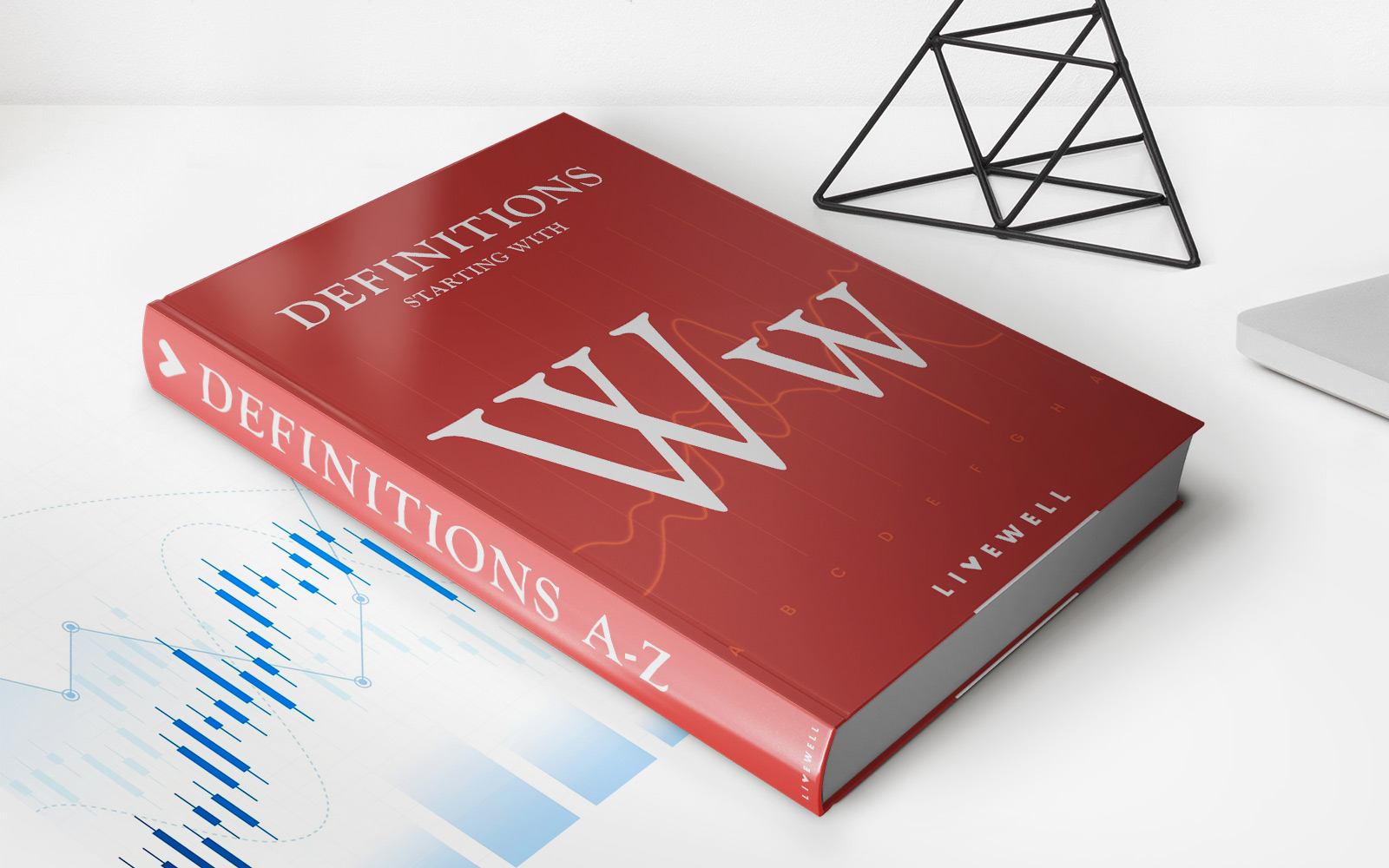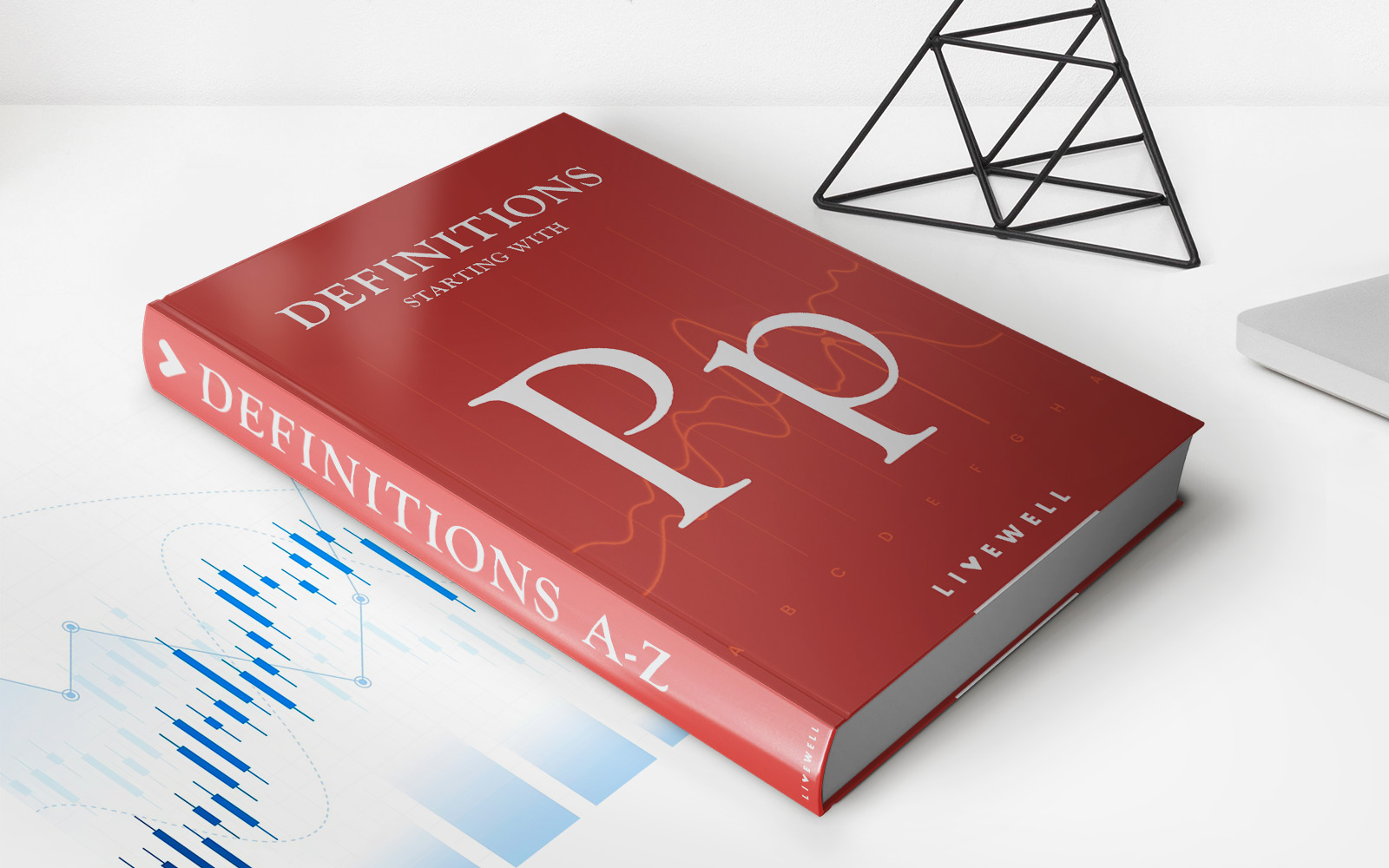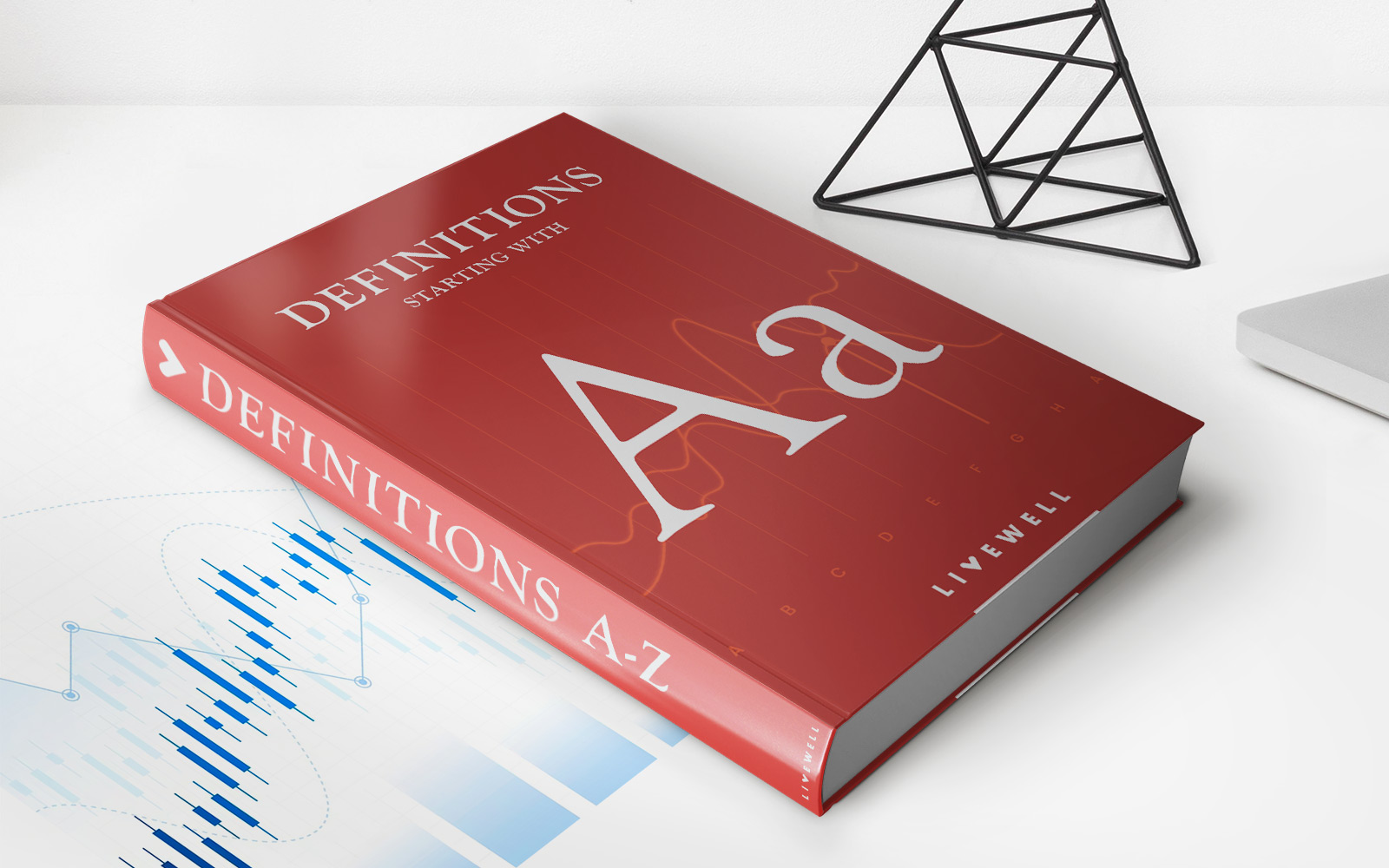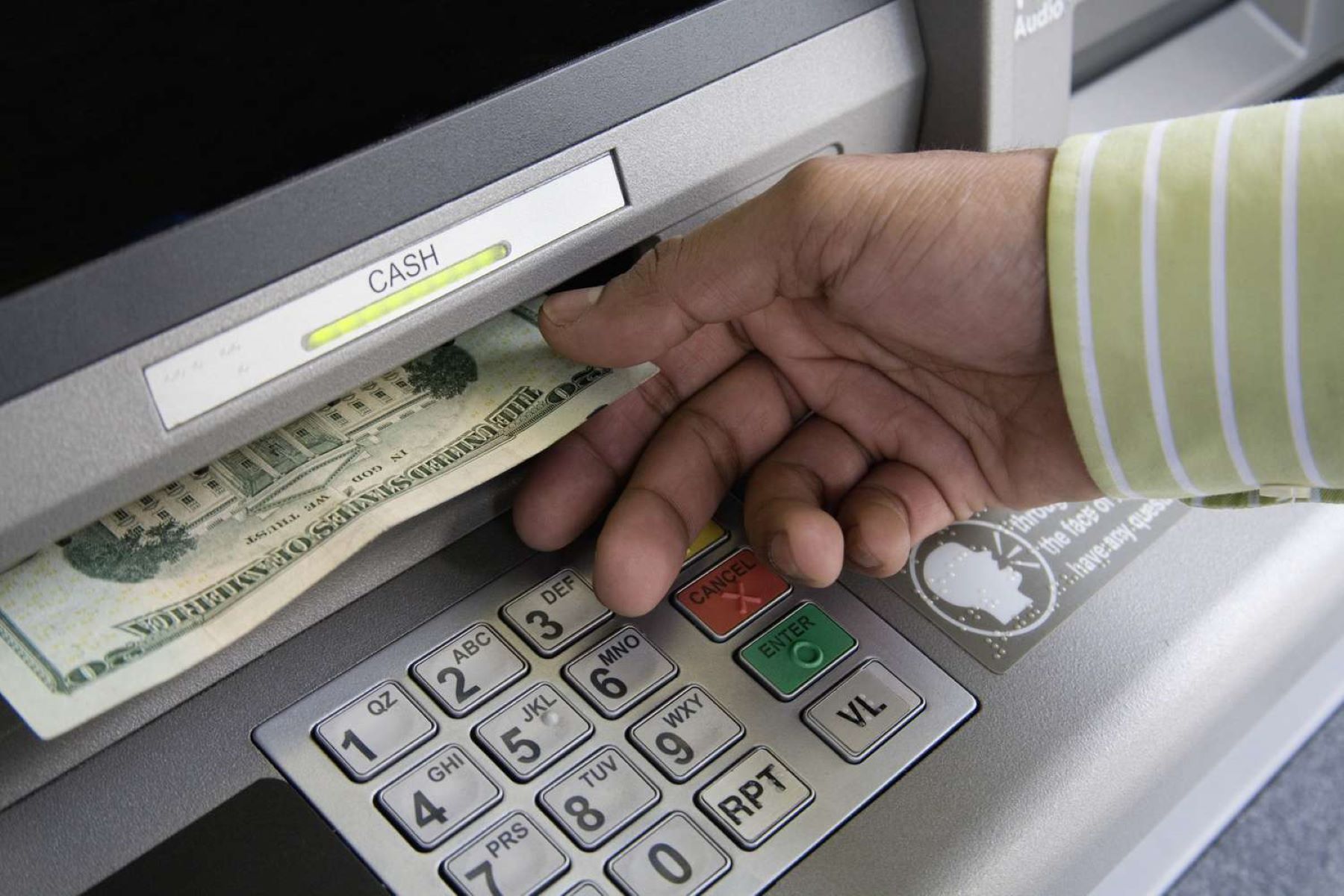

Finance
What Is An Insurance Write-Off?
Published: November 17, 2023
Learn about what an insurance write-off is and how it affects your finances. Find out how to handle a vehicle write-off and maximize your insurance coverage.
(Many of the links in this article redirect to a specific reviewed product. Your purchase of these products through affiliate links helps to generate commission for LiveWell, at no extra cost. Learn more)
Table of Contents
- Introduction
- Definition of an Insurance Write-Off
- Reasons for Insurance Write-Offs
- Classification of Insurance Write-Offs
- Total Loss Insurance Write-Offs
- Categories of Total Loss Insurance Write-Offs
- Partial Loss Insurance Write-Offs
- Determining Factors for Insurance Write-Offs
- Process of Insurance Write-Offs
- Salvage Option for Insurance Write-Offs
- Implications of an Insurance Write-Off
- Conclusion
Introduction
Insurance is a vital component of financial planning, providing protection and peace of mind against unexpected events. However, there are instances where an insured item, such as a car or property, is deemed unfit for repair or use due to severe damage. This is where the concept of an insurance write-off comes into play.
Simply put, an insurance write-off refers to a situation wherein an insurance company determines that the cost of repairing the insured item exceeds its actual value or is not economically feasible. In such cases, the insurance company compensates the policyholder for the loss, typically by offering a cash settlement.
Insurance write-offs can occur in various scenarios, including motor vehicle accidents, natural disasters, or incidents that cause significant damage to a property. These write-offs are governed by specific guidelines laid down by insurance companies, and are categorised based on the extent of damage or loss incurred.
Understanding the concept of insurance write-offs is crucial for policyholders, as it affects the amount of compensation they receive and their options moving forward. This article aims to provide a comprehensive overview of what an insurance write-off entails, the reasons behind them, the different classifications, and the implications they have on policyholders.
By delving into the intricacies of insurance write-offs, policyholders can make informed decisions, navigate the claims process more effectively, and better understand their rights and entitlements. So, let’s dive deeper and explore the world of insurance write-offs.
Definition of an Insurance Write-Off
An insurance write-off is a term used to describe the process whereby an insurance company declares an insured item, such as a vehicle or property, as damaged beyond repair or uneconomical to fix. In such cases, the insurance company determines that the cost of repairs exceeds the actual value of the item or that it is not feasible to restore it to its pre-incident condition.
When an item is written off, the insurance company offers a compensation settlement to the policyholder that is based on the market value of the item before the incident occurred. The policyholder is then compensated for the loss, and the insurance company takes ownership of the damaged item, often selling it as salvage or scrapping it.
Insurance write-offs can occur due to various reasons, such as:
- Accidents: If a vehicle or property sustains significant damage in an accident, it may be deemed uneconomical or impractical to repair.
- Natural disasters: Events like floods, earthquakes, or fires can cause extensive damage to insured items, making them unfit for repair.
- Vandalism or theft: Instances of severe vandalism or theft may render the item in such a condition that repairing it is not viable.
It is important to note that insurance write-offs are not limited to motor vehicles but can also apply to assets such as buildings, equipment, or even valuable personal belongings.
The classification of an insurance write-off is typically determined by the severity of the damage and the estimated cost of repairs. Insurance companies use specific criteria to assess the extent of damage and evaluate whether the item falls into the category of a total loss or a partial loss write-off.
Understanding the definition of an insurance write-off is crucial for policyholders, as it helps them grasp the process involved and the implications it has on their insurance claims. By familiarizing themselves with this concept, policyholders can effectively handle the aftermath of an incident and fully comprehend their options regarding compensation and potential salvage value.
Reasons for Insurance Write-Offs
Insurance write-offs can occur due to a variety of reasons, all of which revolve around the concept of the insured item being deemed unfit for repair or uneconomical to fix. Here are some of the primary reasons for insurance write-offs:
- Severe Damage: In cases where an insured item, such as a vehicle or property, sustains extensive damage, the insurance company may determine that the cost of repairs exceeds the actual value of the item. This can happen in situations such as major accidents, where the structural integrity of the item is compromised.
- Unsafe Conditions: Safety is a crucial factor considered by insurance companies when deciding whether an item should be written off. If the damage to the item poses a significant risk to the occupants or users, it may be deemed unsafe, leading to an insurance write-off. For example, a car with severe structural damage that compromises its ability to protect passengers in the event of a future accident may be written off by the insurance company.
- Cost of Repairs: Insurance companies take into account the cost of repairs when assessing whether an item should be written off. If the estimated cost of repairs exceeds a certain threshold, the insurance company might determine that it is more cost-effective to declare the item a write-off and pay out the settlement value to the policyholder.
- Economic Viability: In some cases, an item may be written off due to economic reasons. If the cost of repairs exceeds the current market value of the item, it may not be financially viable for the insurance company to invest in restoring it. This might occur with older vehicles or properties where the value has significantly depreciated over time.
- Manufacturer Guidelines: Certain situations may lead to an insurance write-off based on the manufacturer’s guidelines. For example, if a vehicle is flooded and the manufacturer specifies that any flood damage should result in a write-off, the insurance company will follow those guidelines and declare the vehicle a total loss.
These reasons highlight the various factors that insurance companies take into consideration when deciding whether to write off an item. The primary goal is to determine if repairing the item is practical and economically feasible, keeping the interests of both the policyholder and the insurer in mind.
Understanding the reasons behind insurance write-offs is essential for policyholders, as it provides insight into the criteria used by insurance companies and helps manage expectations when filing a claim. It also allows policyholders to make informed decisions about their next steps and explore alternative options such as salvage or replacement.
Classification of Insurance Write-Offs
Insurance write-offs are typically categorized based on the extent of damage or loss incurred. Understanding the classification of insurance write-offs is crucial as it determines the options available to the policyholder and the level of compensation they may receive. Generally, there are two main classifications of insurance write-offs: total loss and partial loss.
- Total Loss Insurance Write-Offs: A total loss write-off occurs when the insurance company determines that the insured item is so severely damaged or uneconomical to repair that it is considered a complete loss. In other words, the cost of repairs exceeds a certain threshold, usually a significant percentage of the item’s pre-incident value, or the item is beyond repair due to extensive damage. In such cases, the insurance company declares the item a total loss and offers a settlement based on the item’s pre-incident value.
- Partial Loss Insurance Write-Offs: A partial loss write-off refers to a situation where the insured item sustains damage that is less severe compared to a total loss. The insurance company determines that the item can be repaired, but the cost of repairs exceeds a certain percentage of its pre-incident value. As a result, the insurance company may declare the item a partial loss write-off and offer a reduced settlement amount, taking into account both the repair costs and the diminished value of the item.
The classification of an insurance write-off is crucial in terms of the compensation and options available to the policyholder. In the case of a total loss write-off, the policyholder generally receives a cash settlement based on the value of the item before the incident. The insurance company then takes ownership of the damaged item, often selling it as salvage or scrapping it.
On the other hand, in the case of a partial loss write-off, the policyholder may have several options. They can choose to accept the settlement amount and retain ownership of the item, arrange for repairs and submit the costs for reimbursement, or negotiate with the insurance company for a higher settlement if they believe the initial offer does not adequately cover the repair costs or diminished value of the item.
Understanding the classification of insurance write-offs empowers policyholders to navigate the claims process effectively and make informed decisions. It helps them assess their options, evaluate the feasibility of repairs, and understand the compensation they are entitled to based on the severity of the damage incurred.
Total Loss Insurance Write-Offs
A total loss insurance write-off occurs when an insured item, such as a vehicle or property, sustains damage that is deemed so severe that it is considered uneconomical or impractical to repair. In these cases, the cost of repairs exceeds a predetermined percentage of the item’s pre-incident value, or the item is beyond repair due to extensive damage.
When an item is declared a total loss, the insurance company typically offers a cash settlement to the policyholder based on the item’s pre-incident value. The policyholder is then compensated for the loss, and the insurance company takes ownership of the damaged item. The insurance company may choose to sell the item as salvage or scrap it, depending on its conditions.
There are generally three main categories of total loss insurance write-offs:
- Category A: Items in this category are classified as “scrap” and have suffered irreparable damage. They are considered unsafe and are not allowed to be repaired or used again. These items are typically sold for scrap materials.
- Category B: Items in this category are also considered “scrap” but may have salvageable parts. While they cannot be repaired and used again, certain components may be removed and resold.
- Category C: Items in this category are repairable, but the cost of repairs exceeds their pre-incident value. These items can be repaired, but the insurance company deems it uneconomical and impractical to do so.
- Category D: Items in this category are generally repairable, and the cost of repairs is less than their pre-incident value. However, the insurance company declares them a total loss due to other factors, such as administrative costs, potential safety risks, or diminished value.
It is important for policyholders to understand the implications of a total loss insurance write-off. While they will be compensated for the loss, they will no longer have ownership of the damaged item. Additionally, in some cases, policyholders may have the option to retain the salvage of the total loss item by buying it back from the insurance company.
Policyholders should also be aware of any salvage titles that may be issued for vehicles declared as total losses. These titles indicate that the vehicle has previously been written off and can affect the vehicle’s resale value and insurability in the future.
Overall, total loss insurance write-offs occur when an insured item sustains severe damage, making repairs uneconomical or impractical. Understanding the different categories and implications associated with total loss write-offs helps policyholders navigate the claims process and make informed decisions about their options moving forward.
Categories of Total Loss Insurance Write-Offs
In the world of total loss insurance write-offs, there are several categories used to classify the level of damage and feasibility of repair. These categories provide insurance companies and policyholders with a clear understanding of the condition of the item and the options available. Here are the main categories of total loss insurance write-offs:
- Category A: Items classified as Category A are considered “scrap.” These items have suffered irreparable and extensive damage, rendering them unsafe for any kind of repair or use. Typically, these items are sold for scrap, with their parts or materials salvaged for recycling or disposal.
- Category B: Items in Category B are also labeled as “breakers.” While they are not repairable for roadworthy use, parts of these items may still have value. Salvageable components are often removed from Category B items before they are sold for scrap. These salvaged parts can then be reused or sold separately.
- Category C: Category C items are considered repairable, but the cost of repairs exceeds their pre-incident value. While repairing these items is technologically possible, it is deemed uneconomical and impractical by the insurance company. Policyholders may have the option to buy back the salvage of the item if they wish to repair it themselves.
- Category D: Items classified as Category D are typically repairable, but other factors influence the insurance company’s decision to declare them total losses. This could be due to administrative costs, safety concerns, or diminished value. Although repairable, the insurance company decides that it is not in their best interest to proceed with the repairs.
It’s important to note that the specific criteria for categorizing total loss insurance write-offs may vary between insurance companies and regions. Different classification systems may exist, and the terms used can differ slightly.
Understanding the categories of total loss insurance write-offs is essential for policyholders. It helps them comprehend the severity of the damage to their insured item and the implications of the insurance company’s decision. It also assists policyholders in determining their options, whether it’s accepting the settlement, negotiating for a higher amount, or exploring alternatives such as salvage or buying back the item.
By being familiar with these categories, policyholders can better navigate the claims process, make informed decisions, and plan their next steps after experiencing a total loss insurance write-off.
Partial Loss Insurance Write-Offs
Unlike total loss insurance write-offs where an item is deemed completely damaged or uneconomical to repair, partial loss insurance write-offs involve insured items that have sustained significant damage but are still salvageable or repairable. In these cases, the cost of repairs exceeds a certain percentage of the item’s pre-incident value.
When an item is classified as a partial loss write-off, the insurance company will typically offer a reduced settlement to the policyholder, taking into account both the repair costs and the diminished value of the item after the incident.
Policyholders with partial loss insurance write-offs generally have several options to consider:
- Accept the settlement: Policyholders can choose to accept the settlement offered by the insurance company and retain ownership of the item. The settlement amount will take into account both the repair costs and the diminished value of the item.
- Arrange for repairs and reimbursement: Policyholders have the option to arrange for repairs themselves and submit the costs to the insurance company for reimbursement. However, it’s important to review the policy terms and seek approval from the insurance company before proceeding with any repairs.
- Negotiate for a higher settlement: If the policyholder believes the initial settlement offer does not adequately cover the repair costs or the diminished value of the item, they can negotiate with the insurance company for a higher settlement amount. Providing evidence such as repair estimates and market valuations can strengthen their case.
It’s important to note that depending on the extent of the damage, the insurance company may impose conditions or restrictions on certain options. For example, if the repair costs are extremely high compared to the item’s value, the insurance company may limit the reimbursement amount or require the policyholder to accept the settlement and surrender ownership of the item.
Partial loss insurance write-offs are common in situations where the item has suffered significant damage, but repair is still deemed feasible. Examples include damage caused by accidents, vandalism, or natural disasters. The insurance company’s aim is to strike a balance between providing fair compensation to the policyholder and assessing the practicality of repairs based on the item’s value and condition.
Understanding the options and implications of partial loss insurance write-offs allows policyholders to make informed decisions and choose the most suitable course of action. It is essential to review the insurance policy, consult with the insurance company, and evaluate the costs and benefits before deciding on the next steps after experiencing a partial loss insurance write-off.
Determining Factors for Insurance Write-Offs
The decision to declare an item as an insurance write-off involves a careful evaluation of various factors by the insurance company. These factors determine the feasibility of repairing the item and play a significant role in determining the appropriate course of action. Here are some key factors that contribute to the determination of insurance write-offs:
- Extent of Damage: The extent of damage sustained by the insured item is a primary consideration. Insurance adjusters assess the severity and nature of the damage to determine if repair is technically possible and economically viable.
- Repair Costs: The cost of repairs is a crucial factor in deciding whether an item should be written off. Insurance companies compare the estimated cost of repairs to the pre-incident value of the item. If the repair costs exceed a certain percentage, typically a significant proportion of the item’s value, it may be considered uneconomical to repair.
- Market Value: The market value of the item plays a significant role in determining whether it is more cost-effective to write off the item or proceed with repairs. If the cost of repairs approaches or surpasses the item’s current market value, an insurance write-off may be the preferred option.
- Safety Considerations: Safety is a paramount concern for insurance companies. If the damage compromises the safety of the item, such as in the case of structural damage to a vehicle, the insurance company may classify it as a write-off to prevent any potential risks to the policyholder.
- Age and Condition: The age and overall condition of the insured item are factors that influence the decision to write it off. Older items or those with pre-existing damage may have diminished value, making it more likely for them to be declared write-offs rather than undergoing extensive repairs.
- Manufacturer Guidelines: In some cases, insurance companies adhere to specific guidelines provided by manufacturers. These guidelines outline the acceptable limits and thresholds for repairability. If the manufacturer stipulates that certain damages should result in a write-off, the insurance company will typically adhere to those guidelines.
It’s important to note that insurance companies have their own internal policies and guidelines for determining write-offs. These may vary between insurance providers and even between different jurisdictions. Policyholders should review their insurance policy and consult with their insurance company to understand the specific criteria used to assess write-offs.
By considering these determining factors, insurance companies aim to make informed decisions that balance the interests of the policyholders and the economic feasibility of repairs. Understanding these factors empowers policyholders to better navigate the claims process, evaluate the decisions made by the insurance company, and make informed choices regarding their next steps.
Process of Insurance Write-Offs
The process of insurance write-offs involves several steps that policyholders and insurance companies go through to determine the status of an insured item and the appropriate course of action. Understanding this process is essential for policyholders who have experienced significant damage to their insured item. Here is an overview of the typical process of insurance write-offs:
- Reporting the Incident: The policyholder should promptly report the incident to their insurance company. This involves providing details of the incident, such as the date, time, location, and a description of the damage sustained. The insurance company will initiate the claims process and assign an adjuster to assess the situation.
- Assessment of Damage: An insurance adjuster will evaluate the extent of the damage to the insured item. They may physically inspect the item, review photographs, or gather information from repair shops or other professionals. The adjuster will also take into account factors such as repair costs, pre-incident value, safety considerations, and manufacturer guidelines.
- Calculating the Settlement: Once the damage assessment is complete, the insurance company will calculate the settlement amount to be offered to the policyholder. This amount is typically based on the pre-incident value of the item minus any deductible and may also consider factors like the salvage value of the item if applicable.
- Providing Documentation: The insurance company may request supporting documentation, such as repair estimates, photographs, or any relevant paperwork, to support the claim. Policyholders should ensure they provide all requested documents promptly to expedite the claims process.
- Negotiation (if applicable): In some cases, policyholders may choose to negotiate the settlement amount with the insurance company, especially if they believe it does not adequately cover the repair costs or the diminished value of the item. Negotiation may involve providing additional evidence or seeking professional opinions to support their case.
- Settlement and Ownership Transfer: Once the settlement amount is agreed upon, the insurance company will issue the settlement payment to the policyholder. As part of the write-off process, ownership of the damaged item is typically transferred to the insurance company. The insurance company may choose to sell the item as salvage or dispose of it through other means.
It’s important for policyholders to note that the specific process and requirements may vary between insurance companies and regions. Policyholders should carefully review their insurance policy and communicate directly with their insurance company to understand the process specific to their situation.
By familiarizing themselves with the process of insurance write-offs, policyholders can effectively navigate the claims process, provide the necessary documentation, understand the settlement calculation, and ensure a smooth transition of ownership for the damaged item.
Salvage Option for Insurance Write-Offs
When an item is declared a write-off by an insurance company, policyholders may have the option to retain the salvage of the damaged item. The salvage option refers to the opportunity for the policyholder to buy back the damaged item from the insurance company after it has been written off. This provides policyholders with the opportunity to salvage or repair the item themselves, should they choose to do so.
However, it’s important to note that the salvage option may come with certain conditions and considerations:
- Negotiation: The price for buying back the salvage is typically negotiable between the policyholder and the insurance company. Both parties need to come to an agreement on the salvage value, taking into account the extent of damage, the potential costs of repairs, and the overall market value of the item in its current condition.
- Transfer of Ownership: Once the salvage is bought back, ownership of the damaged item is transferred back to the policyholder. It’s important to understand that the item will come with a new title, often referred to as a “salvage title”. This salvage title indicates that the item has been previously declared a write-off and may have implications on the item’s future insurability and resale value.
- Insurance Considerations: Insuring a salvaged item can be more challenging compared to insuring a regular item. Insurance companies may have specific requirements and limitations when it comes to providing coverage for salvage-titled items. Policyholders should consult with their insurance company to understand the implications and requirements before proceeding with repairs or re-registration of the salvaged item.
- Repair and Inspection: Policyholders who choose to salvage and repair the item themselves should consider the potential costs of repairs, sourcing replacement parts, and ensuring the quality and safety of the repairs. In many cases, salvaged items may require thorough inspections and certifications before they can be roadworthy or meet regulatory standards.
The salvage option can be beneficial for policyholders who have the knowledge, resources, and capability to repair or salvage the damaged item themselves. By buying back the salvage, they have the opportunity to potentially save money on repairs or retain sentimental value associated with the item.
However, policyholders should carefully evaluate the costs and benefits of exercising the salvage option. It is recommended to obtain professional advice, thoroughly inspect the extent of the damage, and understand the potential challenges and implications before making a decision.
Overall, the salvage option provides policyholders with the opportunity to salvage or repair the damaged item themselves, should they choose to do so. By carefully considering the conditions and implications, policyholders can make an informed decision that aligns with their needs and preferences.
Implications of an Insurance Write-Off
An insurance write-off can have several implications for policyholders, both in terms of the immediate impact on their assets and the long-term implications on their insurance coverage and financial situation. Here are some key implications to consider:
- Loss of Asset: The most immediate implication of an insurance write-off is the loss of the insured item itself. Whether it’s a vehicle, property, or valuable possession, policyholders no longer have ownership or use of the damaged item. This can impact their daily life, transportation, or ability to use the item for its intended purpose.
- Compensation: As part of the write-off process, policyholders typically receive a cash settlement from the insurance company. The amount is based on the pre-incident value of the item, minus any deductible. While this compensation provides some financial relief, it may not fully cover the costs of purchasing a replacement item or repairing the damage.
- Salvage Considerations: If the salvage option is available, policyholders may have the opportunity to retain the damaged item by buying back the salvage from the insurance company. This decision requires careful consideration of the repair costs, salvage title implications, insurability, and potential challenges of restoring the item to a usable condition.
- Future Insurability: Depending on the circumstances, an insurance write-off can impact the policyholder’s future insurability. The item’s salvage title or the fact that it has been written off may affect the ability to obtain comprehensive coverage or result in higher insurance premiums. Insurance companies may also consider the policyholder’s claims history when providing coverage in the future.
- Diminished Value: Even if an item is repaired after an insurance write-off, it may still have diminished value in the eyes of potential buyers or insurance providers. This can affect the item’s market resale value, making it difficult to recoup the full value or making it less desirable for buyers.
- Financial Considerations: An insurance write-off can put a strain on the policyholder’s finances. If the settlement amount received is insufficient to cover the costs of a replacement item or repairs, policyholders may need to allocate additional funds or seek alternative financing options. This can impact their overall financial situation and budget.
Understanding the implications of an insurance write-off empowers policyholders to make informed decisions and plan for the future. It’s important to carefully consider the financial implications, evaluate the salvage option if available, and assess the impact on future insurability and resale value.
Policyholders should review their insurance policy, seek guidance from their insurance company, and consider consulting professionals to fully understand the implications of an insurance write-off on their specific situation. By doing so, policyholders can better navigate the aftermath of an insurance write-off and make sound financial decisions moving forward.
Conclusion
Insurance write-offs are an important aspect of the insurance industry that policyholders should understand. Whether it’s a total loss or a partial loss, the process of determining an insurance write-off involves careful assessment of factors such as the extent of damage, repair costs, market value, safety considerations, and manufacturer guidelines.
Total loss insurance write-offs occur when an insured item is deemed uneconomical or impractical to repair, while partial loss insurance write-offs involve significant damage that exceeds a certain percentage of the item’s pre-incident value. These classifications impact the compensation and options available to policyholders.
The process of insurance write-offs involves reporting the incident, assessing the damage, calculating the settlement, and transferring ownership of the item to the insurance company. Policyholders may have the salvage option, allowing them to buy back the damaged item from the insurance company, but it comes with considerations such as negotiation, salvage titles, insurance implications, and repair costs.
The implications of an insurance write-off include the loss of the insured asset, compensation through a settlement, salvage considerations, impact on future insurability, potential diminished value, and financial strain. Understanding these implications is crucial for policyholders to make informed decisions and plan for the future.
In conclusion, being knowledgeable about insurance write-offs empowers policyholders to navigate the claims process more effectively and make informed decisions about their options, whether it’s accepting the settlement, negotiating, salvaging the item, or exploring alternatives. It’s essential for policyholders to review their insurance policy, communicate with their insurance company, and seek professional advice to understand the specific details and implications of an insurance write-off for their unique situation.


